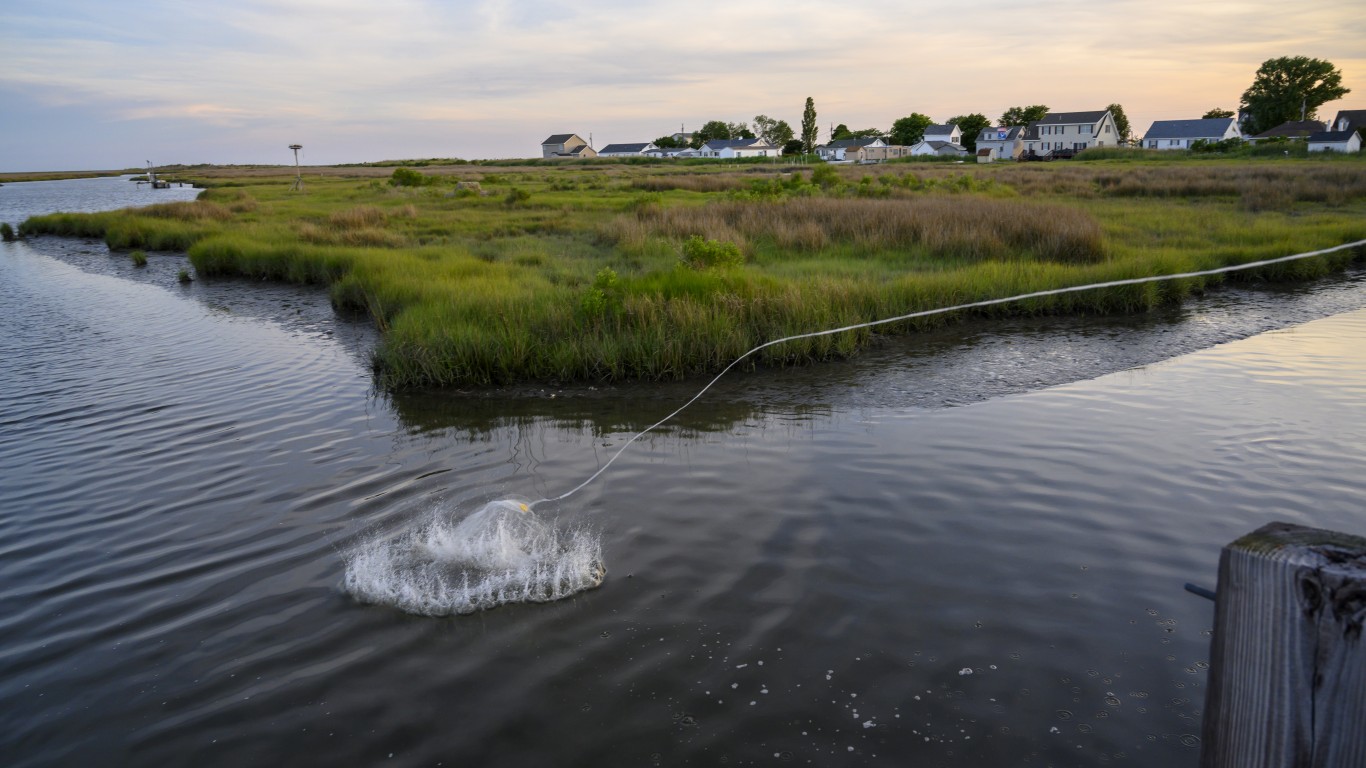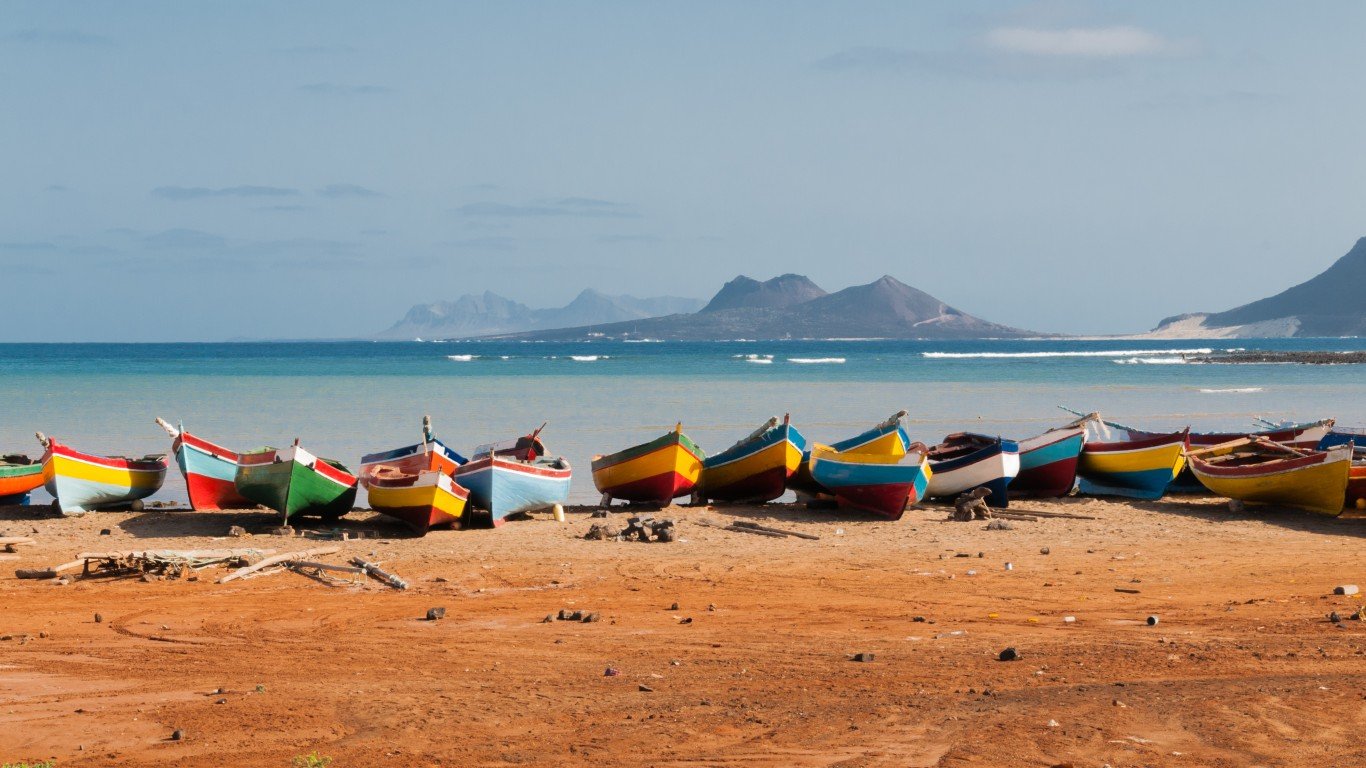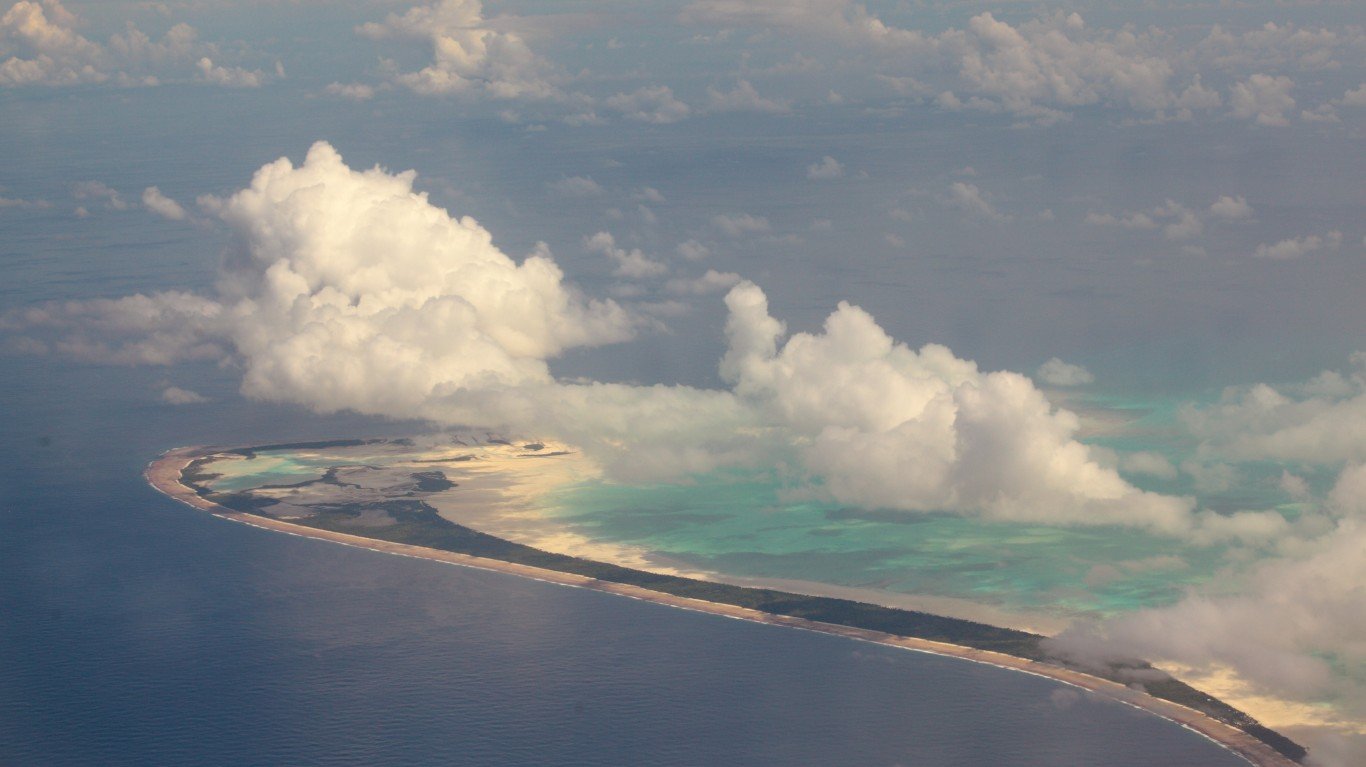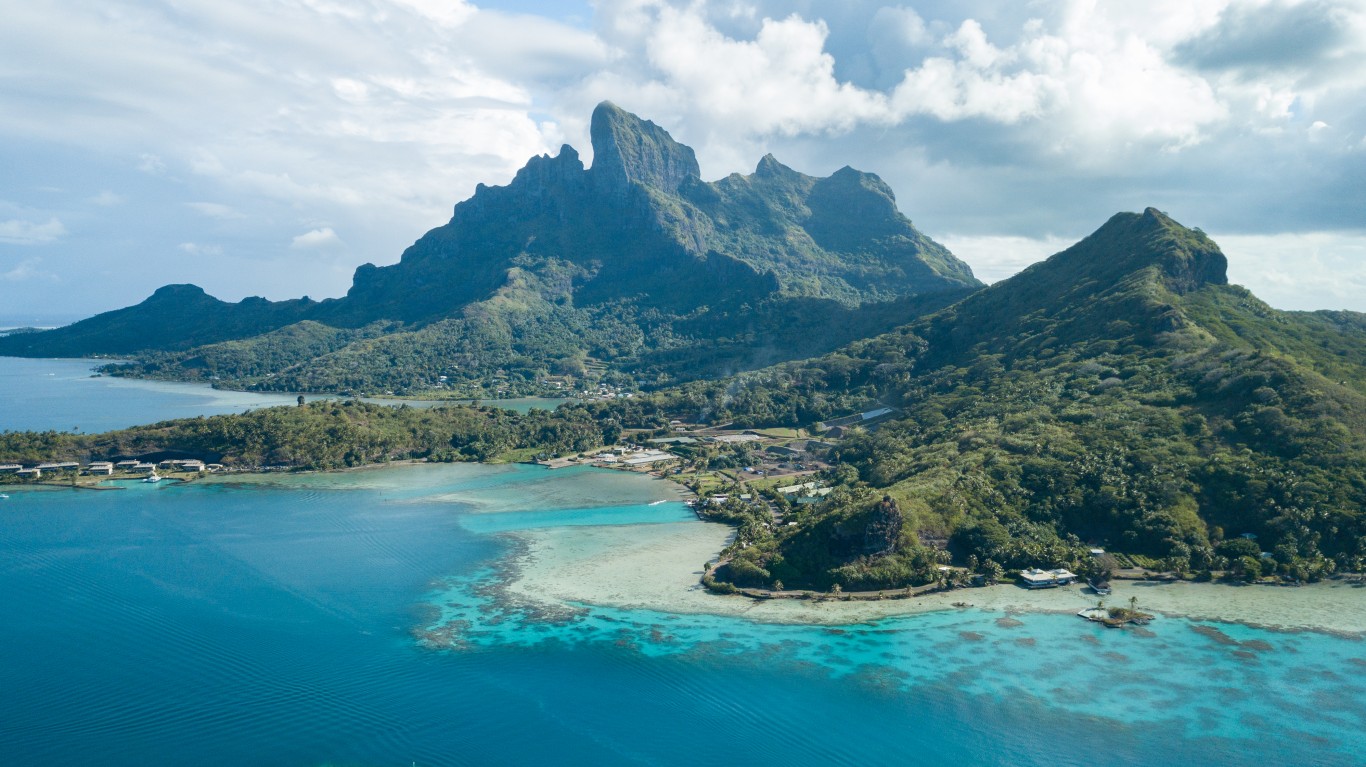
11. Tangier Island, Virginia
> 2018 Population: 706
Tangier Island, Virginia, also called the soft-shell capital of the world, is on the front lines of climate change in the United States. The highest point of the island is just 6 feet above sea level. The island has lost two-thirds of of land area since 1850 because of the longer term effects from what is called glacial rebound. The island has been sinking by about an inch a year because of rising sea levels. Storm-powered erosion and sea-level rise may force people to flee the island. The state of Virginia has offered $3 million to build a wall around the island’s harbor, but residents think they need a wall around the whole island to save it from being inundated.

12. Cape Verde
> 2018 Population: 543,767
Cape Verde is a nation comprising a group of islands off the west coast of Africa. Like many island states, Cape Verde is vulnerable to climate change impacts because of its small surface area, high population density, inadequate infrastructure, and a shortage of potable water resources. Because of its geographic vulnerability, Cape Verde is also prone to natural catastrophes. The archipelago has embarked on a strategy to integrate environmental issues into its planning goals and promote sustainable development.

13. Kiribati
> 2018 Population: 115,847
In 2017, low-lying Kiribati declared that global warming was literally killing it. The nation, which consists of 33 islands, with a total land mass of just 309 square miles, that are about 6 feet above sea level, may actually become the first to be completely submerged by global warming. Rising sea levels have already swallowed sections of coastline. The country is expected to become uninhabitable long before it’s completely under water.

14. French Polynesia
> 2018 Population: 277,679
French Polynesia is home to two of the most exotic travel destinations in the world — Bora Bora and Tahiti. With the island group threatened by rising seas, the California-based Seasteading Institute has introduced the “Floating City Project,” which is a proposed self-sustainable community whose energy is provided by solar and wind power. The Pacific nation became the first country in January 2017 to sign an agreement to locate the floating islands off its coast. The U.N.’s Intergovernmental Panel on Climate Change said sea levels in French Polynesia are expected to rise by as many as 32 inches by the end of the late 21st century.

15. Vanuatu
> 2018 Population: 292,680
Vanuatu, formerly called the New Hebrides, is an island nation in the South Pacific, northeast of Australia and west of Fiji. Like many islands in the Pacific, rising ocean temperatures as a result of climate change will have a profound impact on the nation’s fisheries, one of the most significant sources of food in Vanuatu, and the impact will be felt also in tourism. The nation is already feeling the effects of coastal erosion and ocean acidification. Vanuatu is signatory to the Paris Agreement that aims to limit greenhouse gases, and it has adapted plans to reduce the risk of disaster from these inevitable changes.





